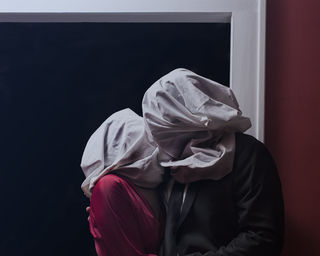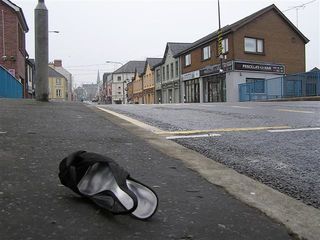Coronavirus Disease 2019
From Angst to Ennui: Adjusting to Life During COVID-19
Coping with death, social isolation, and limbo during the SARS-CoV-2 pandemic.
Posted April 15, 2020

“Thus each of us had to be content to live only for the day, alone under the vast indifference of the sky. This sense of being abandoned, which might in time have given characters a finer temper, began, however, by sapping them to the point of futility.”
—The Plague, Albert Camus
While we remain in social isolation as COVID-19 continues to unfold, reading the personal accounts of others grappling with life during a worldwide pandemic can help keep us connected. In a similar way, revisiting accounts of other pandemics such as Daniel Dafoe’s journalistic telling of the Great Plague of London (Journal from the Plague Year) and Albert Camus’ fictional allegory about being quarantined as the plague ravages a small Algerian town (The Plague) can remind us of important lessons from the past, not the least of which is that people have lived through pandemics far worse than ours before.
In the spirit of documenting history and interconnecting through such memoirs, this installment of Psych Unseen offers a narrative survey of some of the experiences I’ve been hearing about from friends, family, colleagues, and patients over the past several weeks (along with many links to other articles for further reading).
Spoiler alert: While we’re all navigating common challenges of life during COVID-19, each of us is negotiating the pandemic — and our experiences of it that range from considerable angst to discomforting ennui — according to our own unique personalities and circumstances.
For those on the front lines of the pandemic in New York City where “the curve” remains steep and has overwhelmed hospital resources in just the kind of worst-case scenario that the rest of the country is trying to avoid, healthcare workers and those that support them are experiencing a kind of overwhelming hardship and terror that few of us can imagine.
Although most of the country has been fortunate to avoid facing similar existential threats head-on in our personal lives, many are struggling with newfound unemployment (some 15% of the workforce may be out of a job). Some are living day-to-day with food insecurity that has been amplified in a way that the majority of us have only recently had a brief taste of in our thwarted trips to the grocery store to stock up on basic provisions like toilet paper.
Those of us privileged to have both our health and livelihoods still intact have the luxury of dealing with the more mundane, but non-trivial adjustments to social distancing. Introverts who don’t thrive on social contact the way that extroverts do may be having an easier time, but even for them, it may not be the idyllic world that some might imagine. Recently, a friend of mine turned down an invitation to celebrate her birthday via group video chat, which would have been the third social gathering demanded of her in the past two weeks. Her reason: “introverting.”
It’s been proposed that we should use terms like “physical distancing” or “distant socializing” in place of “social distancing.” But introvert or not, certain human rituals are designed around, and really don’t work very well without direct physical contact. Many are therefore faced with the decision to either postpone wedding plans indefinitely or scale back their in-person guest lists in favor of remote digital participation. School graduation ceremonies and proms have been canceled altogether, with little hope of ever being rescheduled. The ability to grieve and put to rest those that have died, or to spend time with loved ones near the end of life, has likewise been stripped of the kind of direct human contact that imbues such rituals with meaning and the potential to heal or achieve closure.
A patient of mine had two family members die in the past month — one likely from COVID-19 and another from a car accident — she described in sterile detail how one funeral was restricted to not more than 10 people and how traditional cultural practices related to interactions with the bodies had to be abandoned. Another former colleague who is now retired in his 70s, cooped up at home comfortably but alone with asthma, is wary of stepping outside, wonders when it will be safe, and admitted to having fleeting thoughts that “maybe I should just get it over with.”

To meet the needs of nearly half the population who say that COVID-19 is affecting their psychological well-being, mental health providers have had to replace one-to-one interactions with telecommunication strategies. Many options have been rapidly deployed to accommodate individual and group therapy, “self-help” meetings for those struggling with addiction, and medication management. (See here, here, and here.) But those interventions are fraught with challenges, not only related to lack of direct personal contact but by the fact that many with mental illness don't have access to a smartphone or a computer with video capability. Whatever longer-term implications social distancing will have on mental health remains to be seen.
The already fuzzy line between suffering that's diagnostic of mental illness and that which is normal in response to difficult circumstances is being increasingly blurred during COVID-19. Accordingly, people who are negotiating stress and anxiety are scrambling to find their own individual ways to safeguard themselves and their families, independent of reaching out for mental health care. Many of us have become fastidious about germs — not only washing hands and wearing masks as directed, but stripping down our clothes before entering our homes and putting them into the wash, wiping down every surface with disinfectant at regular intervals, and hoarding cleaning supplies and sometimes even hospital-grade personal protective equipment (PPE).
Others are binding their broader COVID-19-related anxieties and fears by buying guns. Firearms sales have skyrocketed during the pandemic, with ongoing debates about whether gun stores should remain open as “essential businesses.”
While many firearms are probably being purchased by those who already own them, adding to existing home arsenals, first-time purchases are happening too. A co-worker, who describes himself as politically “far left of liberal” recently disclosed that he’d purchased a .30 carbine semi-automatic rifle — the closest thing to an “assault rifle” without actually looking like one — from an independent Federal Firearms License (FFL) dealer due to a combination of increasing political unease and the dwindling inventory of local stores.
Although the recent spike in sales could result in greater gun violence down the line, firearm ownership must be understood in terms of how guns make us feel — in times of crisis and uncertainty, buying a gun for self-protection is a common strategy for some of us to “self-medicate” anxiety and soothe fear.
In a similar way, it's not unusual for people to counter feelings of losing control amidst a crisis by searching for a preventable root cause or finding someone to blame. For many, the Trump administration is an easily justified target. Others have redirected their COVID-19 anxieties into ire aimed at China, whether by insisting on referring to SARS-CoV-2 as the “Chinese virus” or the “Wuhan virus,” embracing conspiracy theories about it being man-made in a lab as a deliberate bioweapon, or by perpetrating brazen expressions of anti-Asian racism or more routine bigotry.
In that vein, COVID-19 continues a long tradition of infectious diseases being used to stoke racial prejudice, with the potential to bleed across cultures into a kind of generalized or muddled xenophobia. An Asian friend of mine lamented on social media that his children, who aren’t Chinese, were harassed at school by classmates who accused them of spreading coronavirus. Not long afterward, he posted about how China should be held accountable for “murder” if an elderly family member with COVID-19 fighting for his life in the ICU were to die.
For a lucky few, many aspects of life during COVID-19 haven't changed that much and have even improved. As a hospital-based doctor, I’m still going to work every day and am in no hurry for my now speedy commute to revert back to a bumper-to-bumper daily grind. For an acquaintance who lives in a Midwest “corn patch” and makes swords for a living, social distancing isn't much different from his usual way of life and business is booming now. But we both know that things could change in an instant.
For those of us fortunate enough to evade tragedy thus far, many aspects of life are at a minimum on hold now, left dangling in time for the foreseeable future. Future planning — whether related to family visits and vacations, life-changing aspirations like finding our soul mate or a new job, or even something so mundane as scheduling haircuts or car repairs — has been put into limbo.
In The Plague, Camus wrote of the “incorrigible sorrow” of this limbo while living in “exile” after the disease-stricken town is quarantined. In the early stages of the town's lockdown, the hope of its people hinges on fantasies of escape or imagining that the disease will quickly run its course so that they can get on with their lives. Things don’t end so well in The Plague, but fortunately, most of us are far more likely to ride out COVID-19 while at least escaping our own deaths or those of our loved ones. But even so, life has changed for all of us, suffering is always relative, and the duration of our exile and what the world will look like when it ends remain uncertain and therefore ridden with anxiety.
In the meantime, we continue to cope, however and as best we can.




